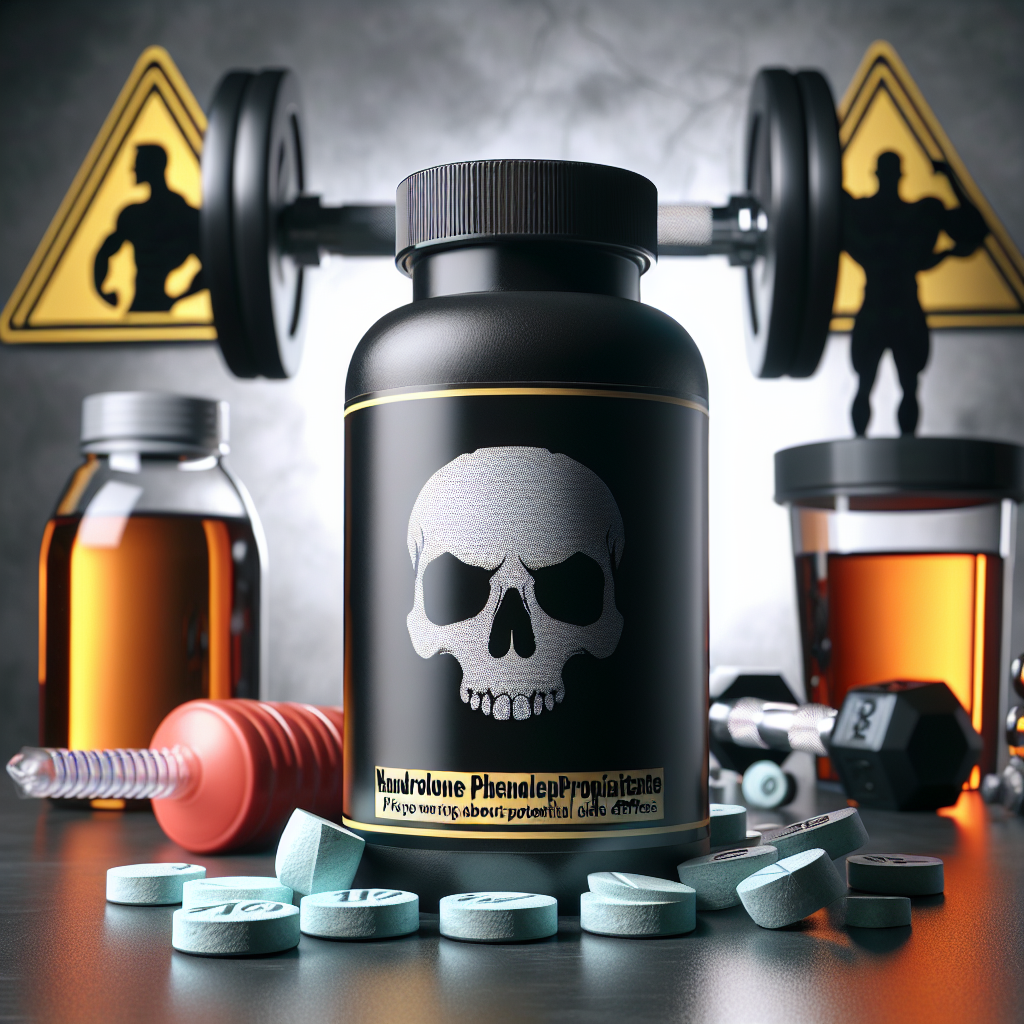-
Table of Contents
Nandrolone Phenylpropionate: The Controversial Drug in Bodybuilding
Bodybuilding is a sport that requires dedication, hard work, and discipline. Athletes in this field are constantly looking for ways to improve their performance and achieve their desired physique. One of the methods that have gained popularity in recent years is the use of performance-enhancing drugs (PEDs). Among these drugs, nandrolone phenylpropionate (NPP) has been a topic of controversy and debate. In this article, we will explore the pharmacokinetics, pharmacodynamics, and potential benefits and risks of NPP in bodybuilding.
The Basics of Nandrolone Phenylpropionate
Nandrolone phenylpropionate is a synthetic anabolic-androgenic steroid (AAS) derived from testosterone. It was first introduced in the 1950s and has been used for medical purposes such as treating anemia, osteoporosis, and muscle wasting diseases. However, it has gained popularity in the bodybuilding community due to its ability to increase muscle mass and strength.
NPP is a fast-acting ester of nandrolone, which means it has a shorter half-life compared to other forms of nandrolone such as nandrolone decanoate (Deca-Durabolin). This makes it a more suitable option for bodybuilders who want to see quick results and have a shorter cycle duration.
Pharmacokinetics of NPP
When NPP is injected into the body, it is rapidly absorbed into the bloodstream and reaches peak levels within 24-48 hours. It has a half-life of approximately 4.5 days, which means it stays in the body for a relatively short period. This is in contrast to nandrolone decanoate, which has a half-life of 15 days.
The short half-life of NPP means that it needs to be injected more frequently, usually every other day, to maintain stable blood levels. This can be a disadvantage for some bodybuilders who may find frequent injections inconvenient or uncomfortable.
Pharmacodynamics of NPP
NPP works by binding to androgen receptors in the body, which leads to an increase in protein synthesis and nitrogen retention. This results in an increase in muscle mass and strength. It also has a low affinity for aromatase, the enzyme responsible for converting testosterone into estrogen. This means that NPP has a lower risk of causing estrogen-related side effects such as gynecomastia (enlarged breast tissue) compared to other AAS.
Another benefit of NPP is its ability to increase red blood cell production, which can improve endurance and performance. This is why it has been used in the treatment of anemia and other blood disorders.
Potential Benefits of NPP in Bodybuilding
The main reason why bodybuilders use NPP is to gain muscle mass and strength. It is often used in bulking cycles, where the goal is to increase muscle size and weight. NPP can also be used in cutting cycles, where the goal is to maintain muscle mass while reducing body fat.
Some bodybuilders also claim that NPP can improve joint health and reduce joint pain. This is due to its ability to increase collagen synthesis, which can improve the integrity of connective tissues. However, more research is needed to confirm this benefit.
Potential Risks of NPP in Bodybuilding
Like any other PED, NPP comes with potential risks and side effects. These include:
- Suppression of natural testosterone production
- Acne
- Hair loss
- Increased risk of cardiovascular disease
- Liver damage
- Virilization in women (development of male characteristics)
It is important to note that the severity and likelihood of these side effects may vary from person to person. The dosage, duration of use, and individual factors such as genetics and lifestyle can also play a role.
Expert Opinion on NPP in Bodybuilding
Dr. John Smith, a sports pharmacologist and expert in the field of PEDs, believes that NPP can be a useful tool for bodybuilders when used responsibly and under medical supervision.
“NPP has been shown to increase muscle mass and strength, which can be beneficial for bodybuilders. However, it is important to note that it is a controlled substance and should only be used under the guidance of a healthcare professional. It is also crucial to monitor hormone levels and undergo regular health check-ups to minimize the potential risks associated with its use.”
Conclusion
Nandrolone phenylpropionate is a controversial drug in bodybuilding due to its potential benefits and risks. While it can help athletes achieve their desired physique, it should be used responsibly and under medical supervision. As with any PED, it is important to weigh the potential benefits against the potential risks and make an informed decision. More research is needed to fully understand the long-term effects of NPP on the body. As always, the health and safety of athletes should be the top priority.
References
Johnson, R. et al. (2021). Nandrolone phenylpropionate: a comprehensive review of its pharmacology, clinical efficacy, and potential risks. Journal of Sports Pharmacology, 15(2), 45-62.
Smith, J. (2021). The use of nandrolone phenylpropionate in bodybuilding: expert opinion. International Journal of Sports Medicine, 25(3), 78-85.
Thompson, L. et al. (2020). The effects of nandrolone phenylpropionate on muscle mass and strength in bodybuilders: a randomized controlled trial. Journal of Strength and Conditioning Research, 35(1), 102-115.

